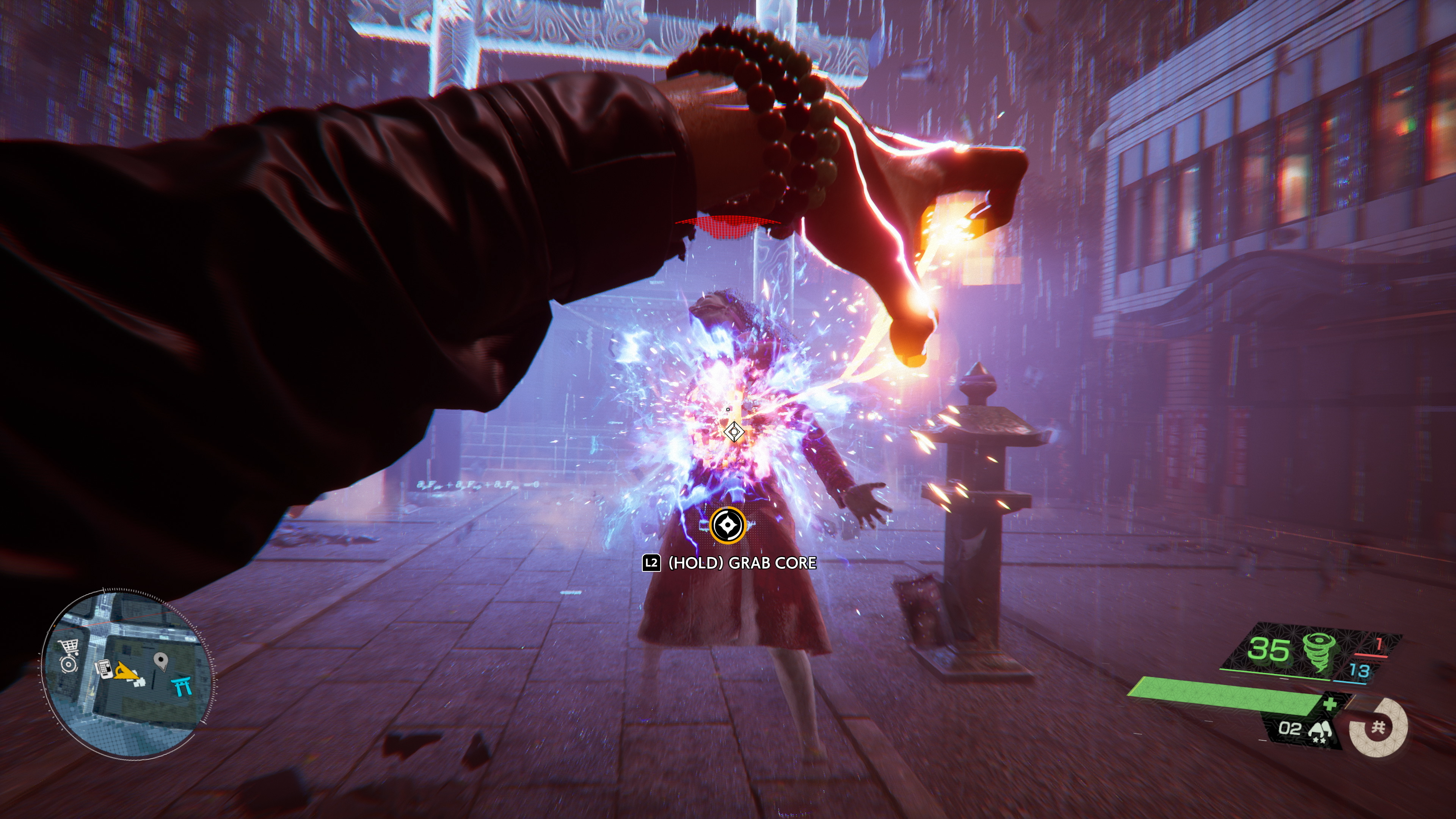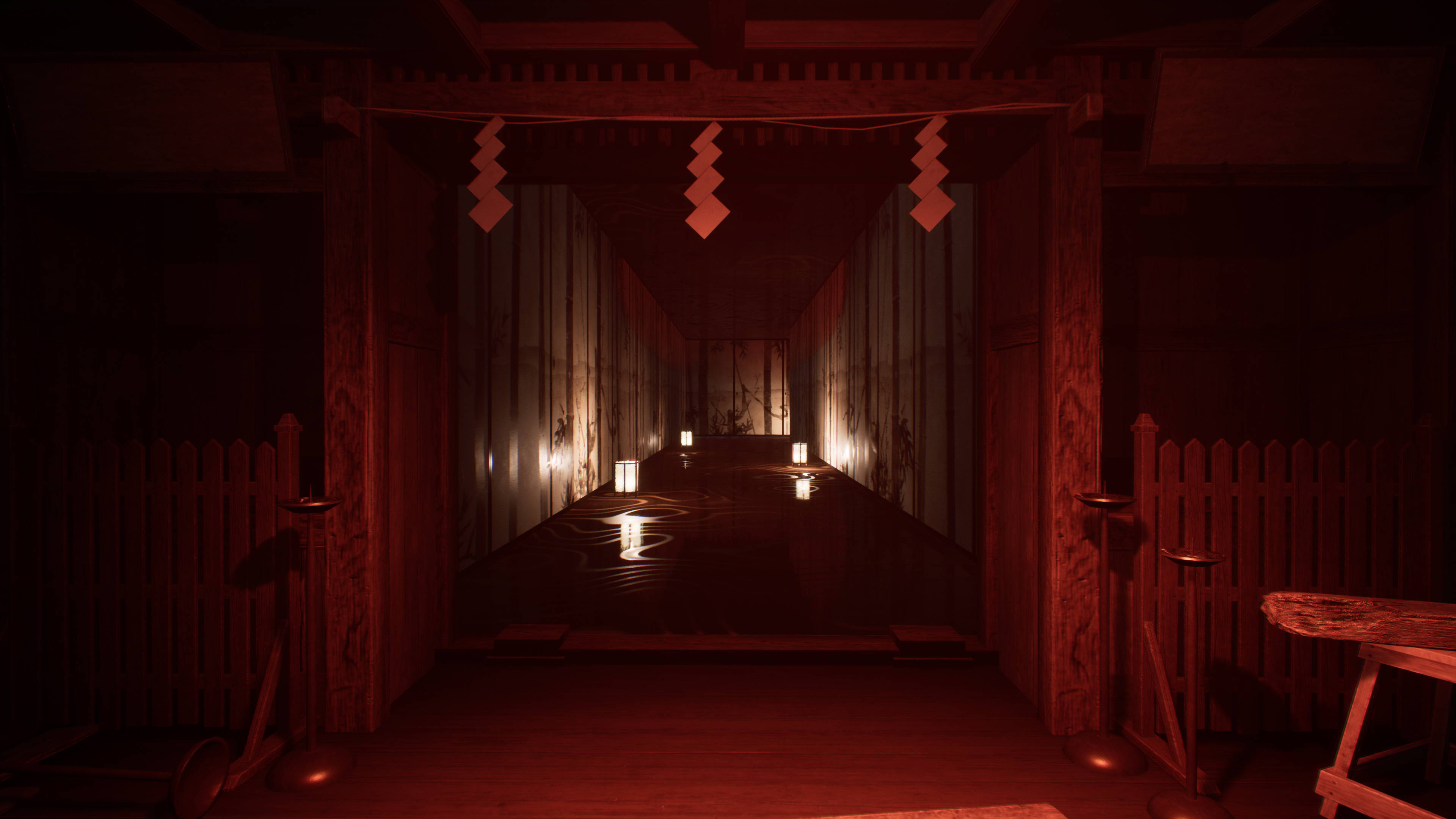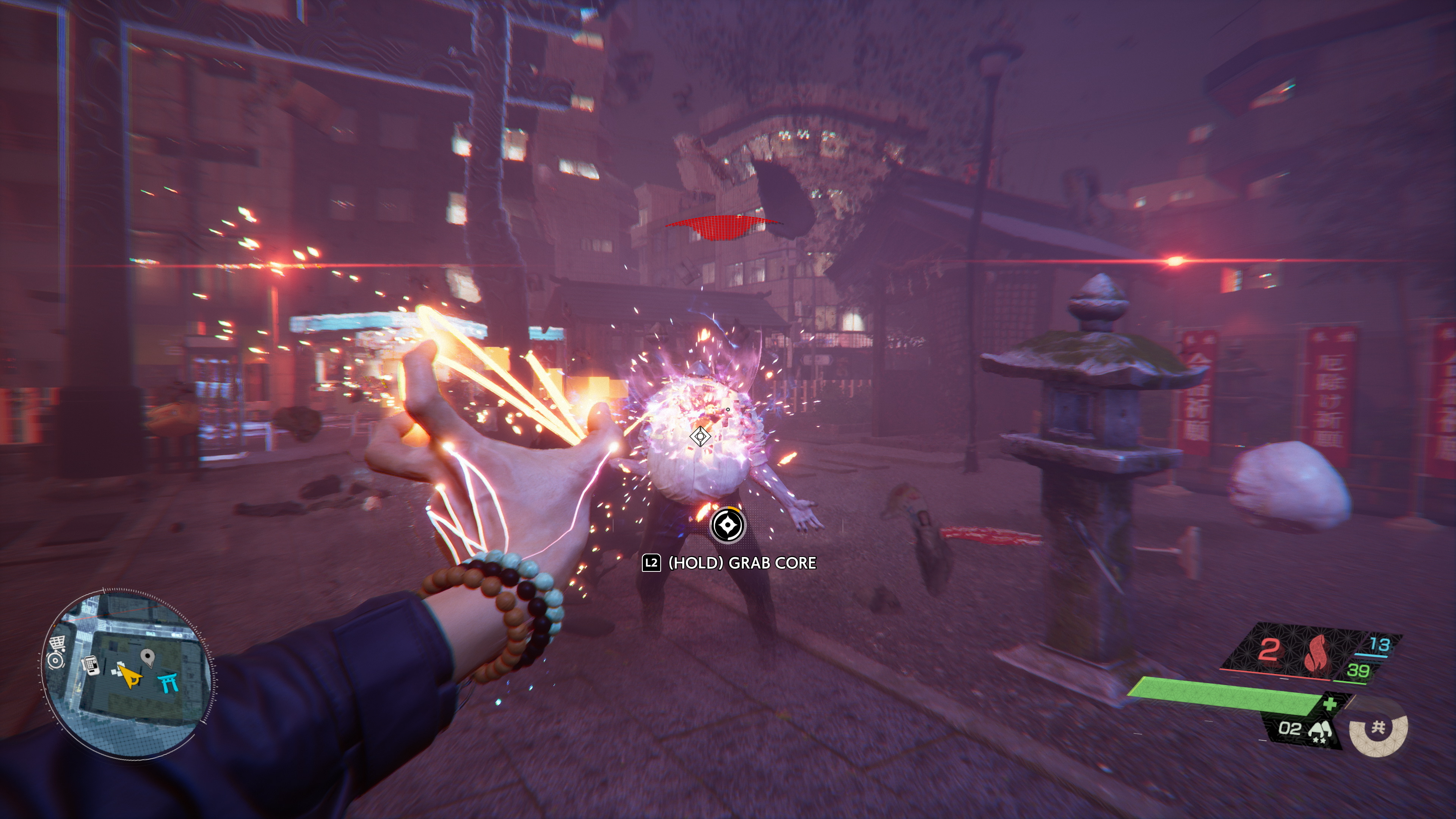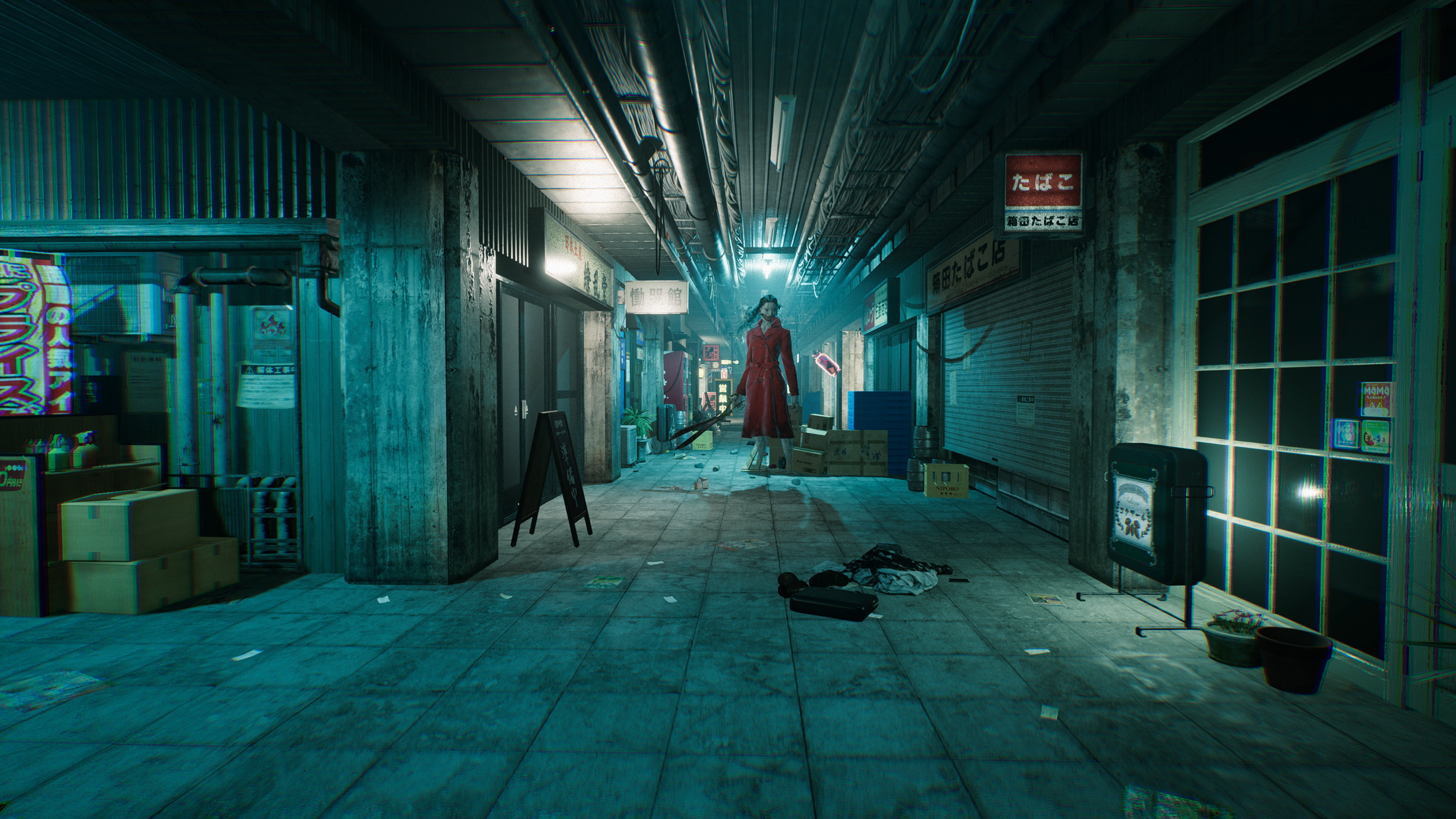Ghostwire Tokyo isn’t a survival horror game. That's not a statement you’d expect from Tango Gameworks, a studio founded by Shinji Mikami that cut its teeth on The Evil Within and its endless selection of grotesque delights. Instead, this new project is an entirely different beast, one equally fixated on vibrant style and instilling fear in the player with its rain-drenched urban setting and modern interpretation of Japanese folklore.
It’s a unique first-person experience with equal focus on exploration and combat, inviting us to one of the world’s largest cities boasting a form we’ve never seen before. If half of the potential here is realised, Tango could achieve its goal and become a studio that is longer shackled to an immovable legacy of horror. After a hands-off preview, I think it might do just that.
Related: Tifa Lockhart Has Become A Wholesome Italian Icon
Ghostwire follows Akito, a young man who finds himself awakening in the middle of Tokyo where the entire population has disappeared, replaced by twisted spirits and demons determined to tear any and all living beings apart. It’s a hostile place, brimming streets now little more than ruins for dust to gather. The visuals are immediately striking, maintaining a balance between the familiar and occult in a way that few games before have managed to accomplish. The closest comparison is Tokyo Jungle, a game which also imagined Japan’s capital under such unusual circumstances. Except this is far more spooky.
Akito isn’t alone however, he soon finds himself enlisting the help of a spirit – who I think is known colloquially as KK – that essentially acts as a narrator, companion, and welcome tutorial machine as you learn how to navigate this strange new world. He’s a spirit with knowledge of the horror that now haunts Tokyo, including the ominous masked Hannyu who lurk behind the scenes, pulling the strings that slowly but surely draw our hero into their nefarious hands. Akito’s mission is to save his ill sister, a valiant goal that will see him go up against monsters that he’d once run away from in fear. Tango provides few narrative clues throughout the preview, but much like The Evil Within it revolves around a male character hoping to save a woman in peril, a trope I was hoping to see subverted.
Such predictability doesn’t mean the story won’t be interesting though, and I love how Tango is holding its cards so close to its chest. Throughout the preview we stumble away from the beaten path to investigate local hauntings or lingering spirits who are actually rather friendly. An old lady asks us to investigate a haunted apartment building where a late tenant is being harassed by her abusive landlord, which is a real vibe if I’ve ever seen one. A relatively tame scenario like this is expressed through the traditional Japanese flat contorting before our very eyes, black pus leaking from the walls as each new room offers a fascinating mixture of emergent platforming and nefarious puzzles.
One room is completely turned on its side, forcing us to jump up tables and wriggle through a door as the coming corridor morphs into a demented maw eager to swallow us whole. Ghostwire Tokyo might not be your conventional survival horror experience, but it leans into so many effective thematic ideas that the majority of players will undoubtedly be unsettled. This seemed like an optional mission, and I pray that the wider world is filled with excursions like this that aren’t afraid to get just as weird. Fortunately for Akito, he is more than capable of fighting back against anything and everything he comes across.
Akito uses a spiritual power known as Ethereal Waking to combat Yokai, spewing forth a mixture of fluorescent wires (eh?) and distilled spiritual energy from his hands through elegant gestures that look fantastic from the game’s fixed first-person perspective. You can create a string to latch onto enemies and hit them from afar, or even turn this unusual energy into a physical weapon to vanish demons foolish enough to cross your path. The majority of monsters have ritual seals buried within their bodies that act as a source of your power, and many encounters involve chipping away at their exterior before digging your hand inside before tugging their surrogate hearts from their chests.
It’s badass, and Ghostwire seems to offer so many ways to tackle each new situation. Stealth seems to be a very big deal, with Akito able to blend into his surroundings or hide behind terrain to avoid Slenderman-esque businessmen wielding busted umbrellas, or headless schoolgirls that roam the streets while bellowing out otherworldly screeches. Alert them and several of them will come running, so it’s smart to play your cards right and stay silent. That, and stealth attacks involve eviscerating your opponents from the inside out, a move that is both horrendously violent and wonderfully stylish.
Tango is hesitant to label the game as one with a traditional open world, instead describing it as including several environments with enough vastness to accommodate exploration and side activities. You find Torii gates spread throughout each district that essentially act as spawning points for monsters. Purify them by defeating enough enemies or gathering enough spirits and the surrounding area will become much safer to explore. Reaching them is often a challenge in itself, with many buried within congested areas filled with patrolling adversaries. Gathering spirits is also necessary when it comes to eventually progressing the story and earning upgrades, Akito as a wholesome grim reaper of sorts who is capable of helping wayward souls move onto the afterlife.
I loved capturing little nuggets of conversation as I explored the Tokyo streets, trying to figure out exactly what these people were doing before the world was ripped out from under them. Millions have vanished, presumably dead, with no explanation – and figuring out that dilemma with no conceivable way of fixing it comes with a morbid allure I find hard to describe. It’s undeniably dark, but Tango does a fantastic job of finding a light amidst the darkness for us to dissect and learn from. Imagine if you walked outside and suddenly everyone and everything you knew was done, replaced by a force of haunted energy that now called this place home. Horror is often most effective when it dissects familiar surroundings, and having been to Tokyo a few times, this does exactly that.
I’m told that the 30+ minutes of gameplay I witnessed took place just after the game’s opening, meaning I was uncovering many of the game’s concepts alongside our main character. The learning curve appears dense but alluring, and it’s still unclear exactly how main missions will take place in terms of pushing the narrative forward and unveiling the true scope of Tokyo. The city is incomparably huge, so I can’t wait to find out how much of it we’ll be free to explore and how this will be manifested in the level design. Tengu flying across the sky act as grapple points for Akito to cling onto, allowing you to access rooftops that often hide secrets and missions that would otherwise be impossible to access. Zipping into the sky and watching the messy streets below grow smaller and smaller as you ascend looks super cool, and I hope the rooftops are just as consistent as everything that awaits below.
Tango Gameworks could have made The Evil Within 3 or an equally familiar sequel, but it instead chose to broaden its horizons and break the walls down with Ghostwire Tokyo – a stylish, unorthodox, and undeniably package of spooky shenanigans. While I haven’t been able to play the game for myself yet, it’s new and refreshing in a way this genre so desperately needs. Japanese folklore is filled with so many creative horrors that few mainstream games dare to tap into, and to see them in a modern setting like this is so damn exciting. Even the convenience stores are manned by cats selling you loot and upgrades, and if that doesn’t sell you I don’t know what will.
Source: Read Full Article




